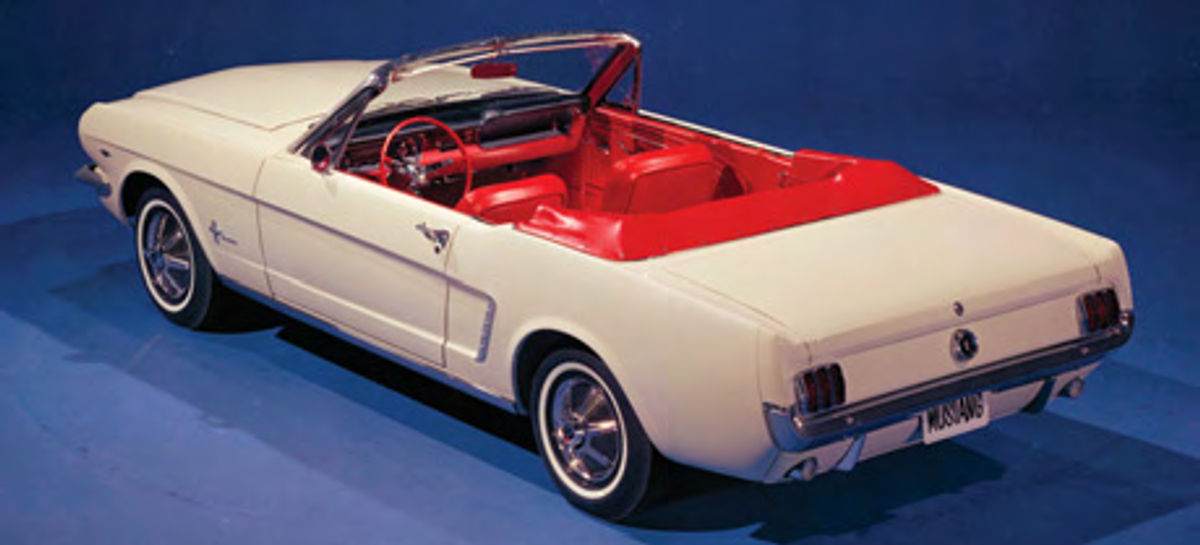Big Changes Coming for the Pony
After Nearly a Half-Century, the Mustang Is Really Evolving. Ford’s Icon Will Soon Lose Its Original 1960s Style.
IT WAS THE summer of 1978 and a group of ranking Ford Motor Co. engineers, including a company vice president, were driving a half-dozen new Mustangs through the mountainous regions north of Atlanta. They were taking part in the final engineering sign-off drive for the pony cars and while it was expected that at this point in the engineering, design and production cycle nothing serious would be uncovered, it was a very important event nonetheless.
After all, these vehicles represented a new generation of the famous Ford pony, the third since the Mustang was introduced in April 1964, and they were quite different from their immediate predecessor, the downsized Mustang II that was marketed in model years 1974-78.
The new 1979 Mustangs that were cruising quickly through the twisting mountain roads were 4.1 inches longer than the Mustang II, rode on a 4.2-inch longer wheelbase, and yet in keeping with the spirit of those fuel-conscious times, were some 200 pounds lighter.
Since the vehicle had undergone a major design change, Ford was looking for massive publicity regarding the fact that its iconic sporty car had come back up in size and was in touch with its popular roots once more. Accordingly, they had planned a major press introduction to coincide with the new car’s public introduction.
But in addition to hosting an international media gathering to help get out the word regarding the new Mustang, the company also selected a young Detroit automotive writer to ride and drive with the engineers on their sign-off trip. The reporter was to write a lengthy article about the new Mustang that would appear in his newspaper on the Sunday before the international press introduction. Furthermore, given the importance of the subject matter, his story would quickly be picked up by the wire services and given widespread distribution.
And that was how I came to be racing along on the mountain roads with that group of engineers who drove as if their pants were on fire and the nearest water was at the bottom of the mountains.
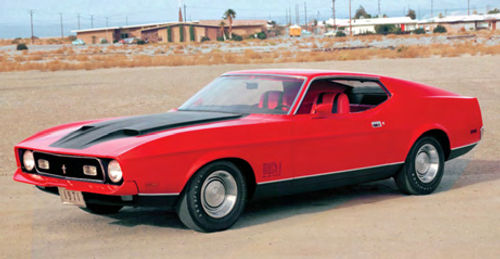
Each of the cars in the test group represented a different trim and equipment level and every so often we would stop and rotate among the Mustangs so we would each have plenty of opportunity to try out the various engine and transmission combinations and experience the types of trim and accessories that would be available on the redesigned pony.
Not surprisingly, the car with a 302 V- 8 and a five-speed was the most popular, because even though it was a heavy, decade-old engine that gave the car a 60/40% weight distribution, it still had the power to make that car move along quite nicely. The new 3.8-liter inline V-6 generated a few smiles, but the 2.3-liter inline four (rated at 88 hp) turned out to be a trial because even with my foot pressed firmly on the accelerator, it was a challenge keeping the others in sight. A new turbocharged version of the four-cylinder engine had been dropped into one of the Mustangs, and it had been touted as being able to put out the same type of power as the V-8 while adding much less weight up front. But it suffered from considerable turbo lag and it seemed that as soon as you were able to coax the turbo into doing its job, you had to back off on the accelerator for a hard curve and lose the boost. (The same problem was experienced in everyday traffic where you had to pretty much put the pedal to the floor to get the turbo to react and then quickly step on the brake to avoid ramming the car ahead of you. It came as no surprise when that turbo setup was not a market success.)
Another Major Change In the Works
That long-ago drive near Atlanta came to mind the other day when I saw some news reports stating that another major change is in the works for the famous and long-running pony car. When a vehicle has been on the market for nearly a half-century, it stands to reason that over the decades it would have to evolve and adjust to the times if it’s to stay in the game.
And change it has since the mid-’60s, growing in size, shrinking and then growing again like an accordion, starting out without much oomph under the hood and then adding a succession of bigger, more-powerful engines until it became one of the most muscular of the muscle cars, then dropping back to smaller engines and finally regaining a good deal of its underhood strength. And after straying somewhat from its early looks, in 2005 Ford introduced a redesigned Mustang with exterior styling that drew inspiration from its ’60s beginnings. At the time, Senior Vice President of Design J Mays referred to the car’s appearance as “retro-futurism.”
But now Mustang will be moving in a direction unlike anything it’s experienced in the past. In keeping with the Ford Motor Co. “One Ford” global product strategy, the coming redesign of the famous pony will turn it into a vehicle that looks nothing like the Mustangs that have rolled from the assembly plants over the past five decades. While none of the next-generation Mustangs have been seen, it’s expected that the new pony will resemble the Ford Evos concept car shown on page 11. And it’s certainly no coincidence that the Evos bears a striking sibling similarity to Ford’s current Focus and Fusion cars.
Ford has described the Evos as carry- ing “the new global design DNA” that will provide “the company’s worldwide design teams with a common framework to guide the creation of new products, enabling them to shape a coherent family of distinctive vehicles sharing the same fundamental design character.”
“We wanted the Ford Evos Concept to give a clear message about where Ford design is heading—shaping vehicles that are fun to drive, have a strong premium visual appeal, and above all, are stunningly beautiful,” said J Mays, who now is group vice president, Design and Chief Creative Officer.
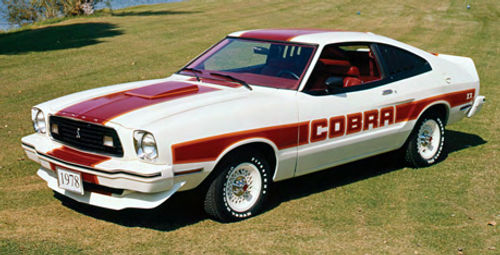
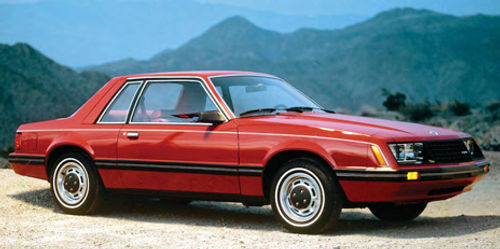
Mays also said something about the company’s “new design DNA” that no doubt helps to explain why a major Mustang redesign was inevitable: “In addition, we worked particularly hard on meeting the high expectations of a new generation of buyers—a group of consumers who have grown up surrounded by beautiful, premium design work on even the most affordable products.”
Seeking the Youth Market… Once Again
The redesigned Mustang, in other words, is aimed at people like Generation Y, the 80 million or so people born between 1980 and the end of the century, just as the original Mustang was created to lure youthful Baby Boomers into Ford dealerships.
Yes, the first Mustang was built on a Falcon platform and when it was introduced on April 17, 1964, some folks said it would never amount to more than a vehicle aimed at young secretaries of the day…but as anyone who has any inter- est in autos at all knows, it turned out to be much more than that.
(The car’s name came from the P-51 Mustang fighter plane like the one seen on the cover backing up the line of two 2004 40th Anniversary models and an original Mustang, but the spirited horse image quickly supplanted the airborne namesake and that’s why you see lots of running ponies on Mustangs but no fighter planes.)
Some people refer to the Mustangs built between March and July 31, 1964 as “19641⁄2” models, however they actually were registered as 1965 cars.
But whatever people chose to call them,itwasgenerallyagreeduponthat theyhadattractivestylingwiththeirlong hoods and short decks, and people who got behind the wheel said the Mustang was a kick to drive.
Optional V-8s gave the car some punch and for those who were even more power hungry, in mid-1965 Ford teamed with the late Carroll Shelby to produce the Shelby GT-350, a Mustang Fastback with a 289 V-8 rated at 306 horsepower in street form and 360 horsepower in the GT-350R, a car that was sold ready for the track.
As for market acceptance, the Mustang quickly proved it had that and then some. The Ford pony set a record for a car’s first year on the market, racking up more than 418,000 sales by April 17, 1965. And during calendar year 1965, Mustang sales put it second only to the Chevy Impala on the American market.
This level of market success gave Ford the confidence to offer its pony with more options, particularly under the hood. Although folks who wanted a more sedate vehicle could still get a six in their Mustang, by 1967 Ford was offering its big block 390 V-8 to compete against the new Chevy Camaro SS396. Furthermore, another Shelby-tuned Mustang, the GT500, came on the market armed with a 428 cid V-8. (In ’68 the GT500 was replaced with the GT500KR “King of the Road” with the new Ram Air 428 Cobra Jet.)
Changes in Stature
As generally was the case with Detroit automakers at the time, Ford’s Mustang grew in size after a few years on the market. In 1969 it gained nearly four inches of length and some 140 lbs. of curb weight. Then in 1971 what came to be known as the “big Mustang” was introduced. It was longer, lower, wider and heavier, and came closer to approximating the mid-size Torino than the original pony.
Then Ford President Lee Iacocca decided that the Mustang should return to a closer alignment with its roots by coming down in size and becoming more sporty and European in nature. The result was the 1974 Mustang II, a car that was seven inches shorter than the original pony and a bit more than a foot shorter than the previous year’s model. But the car was based on the Pinto chassis, not exactly a performance car, and the engine choices were a 2.3-liter 4-cylinder engine (Ford’s first four since the 1930s) or a 2.5-liter V-6.
Sales of the Mustang II got off to a very slow start but then the oil embargo of 1974 boosted the popularity of all smaller cars, including the diminutive pony.
(As an aside, some people refer to the Mustang II as a “Charlie’s Angels” Mustang because two of the leading characters drove them in the popular TV series. Farrah Fawcett and later her replacement, Cheryl Ladd, had a fastback Cobra II with distinctive striping while Jaclyn Smith had an upscale Ghia coupe. The other Angel, Kate Jackson, had to do her sleuthing in a Pinto.)
Moving Toward the Present
After five years as a downsized pony, the “II” was dropped and Mustang grew into the car described at the beginning of this article. In the ensuing years, while engines didn’t return to the size of those seen in the late ’60s and early ’70s, by 2003 they did grow in dimension and power to include a 4.6-liter, dual overhead cam 32-valve V-8 rated at 390- horsepower that was teamed with a six-speed manual transmission.
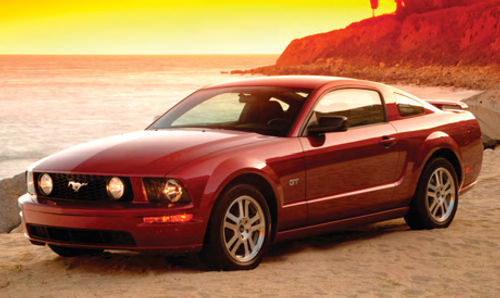
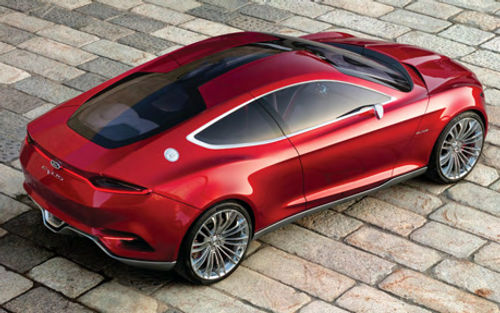
Then, as the pony entered the new century, Ford decided that it was straying too far from its original looks and, as noted above, for 2005 a completely redesigned Mustang was introduced on an all-new platform with exterior styling that the company said drew cues from the 1960s…the car that Ford’s J Mays referred to as “retro-futurism.”
Why, I Didn’t Recognize You…
The “retro” will soon be gone from the “futurism,” however, as the Mustang will undergo its most dramatic transformation ever for the 2014 50th Anniversary edition of the fabled car.
Sales have been slowing for the current version in recent years and it’s been beaten by the revived Chevy Camaro 81,299 to 73,716 in 2010 and 88,249 to 70,436 last year. Some might say that the Camaro has added market strength because it wasn’t available for a while and there is pent-up demand, but neither car is scoring anywhere near Mustang’s initial success and Ford is no doubt hoping that a completely new product, plus a growing youth market will draw in the types of buyers who could potentially be with them for decades to come.
But for those who aren’t particularly interested in Ford’s hopes for the future and tend to prefer the Mustang as it is or was, the good news is that there are plenty of vintage examples out there spanning the pony’s decades of production.
In fact, it’s been said that given the Mustang’s tremendous popularity with restorers, the aftermarket has produced a wide enough range of components and accessories to allow you to build a car from scratch if the spirit were to move you in that direction.
And if anyone out there has done just that, please get in touch with us. We’d like to put your retro Mustang in the magazine.

